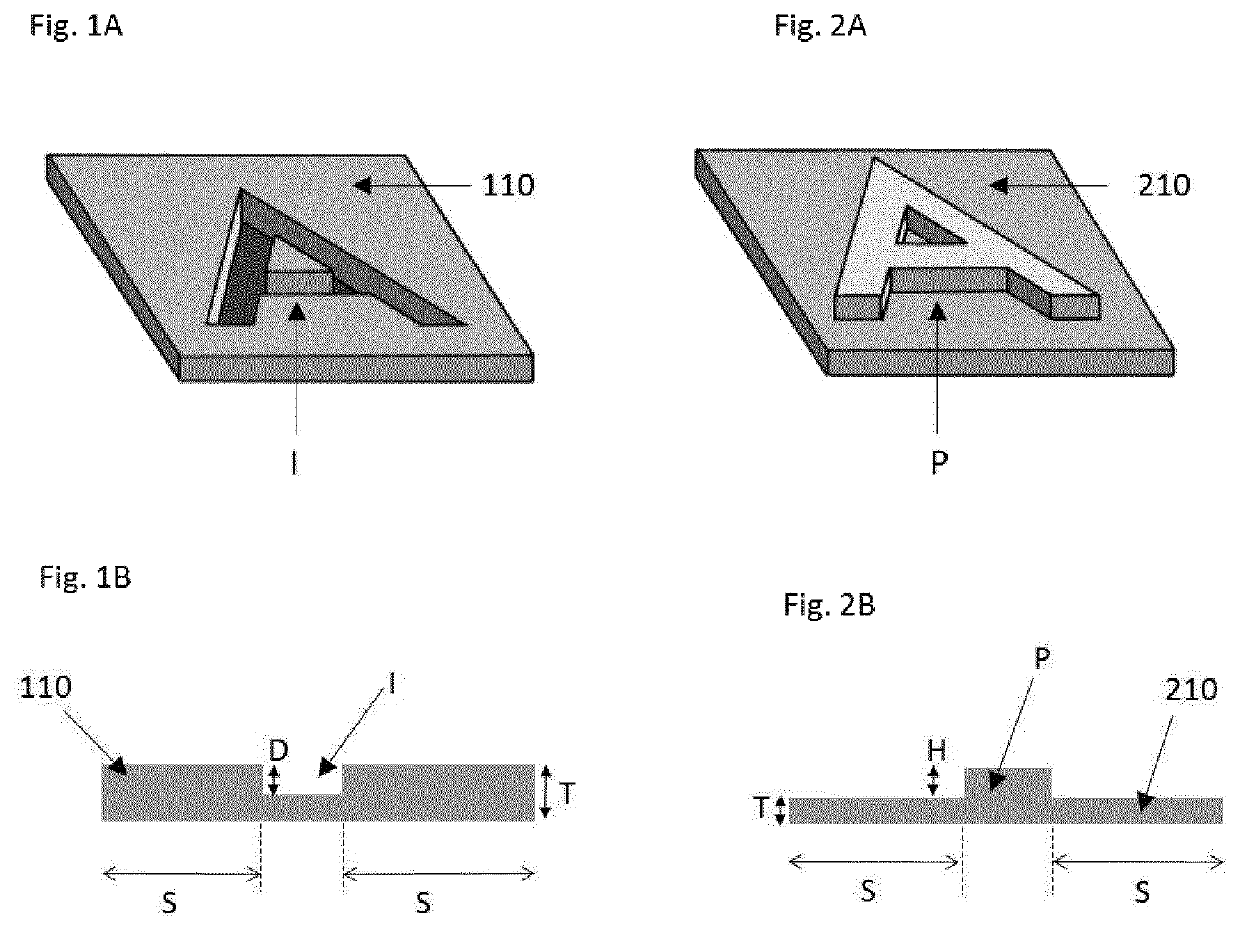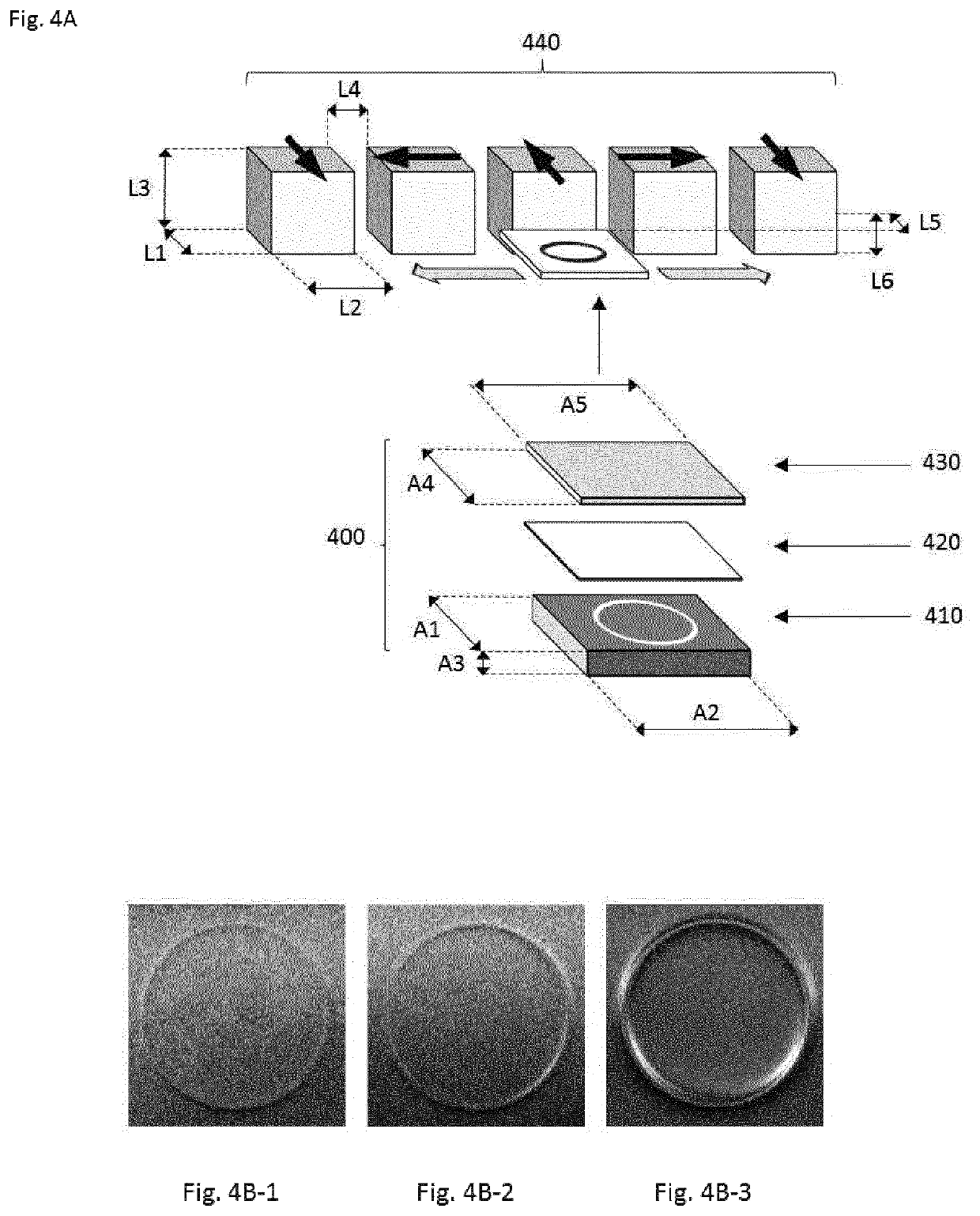Processes for producing effect layers
a technology of optical effect and process, applied in the direction of magnetic bodies, magnetic paints, magnetic materials, etc., can solve the problems of poor reflection of optical effect layers, undesirable appearance of large dark areas in magnetically transferred images, and optical effect layers that may suffer from low reflectivity and brightness, and achieve reliable and easy-to-implement process. , the effect of easy-to-implemen
- Summary
- Abstract
- Description
- Claims
- Application Information
AI Technical Summary
Benefits of technology
Problems solved by technology
Method used
Image
Examples
examples
[0142]A black commercial paper (Gascogne Laminates M-cote 120) was used as substrate (x20) for the examples described hereafter.
[0143]The UV-curable screen printing ink described in Table 1 was used as a coating composition comprising platelet-shaped optically variable magnetic pigment particles so as to form a coating layer (x30). The coating composition was applied on the substrate (x20), said application being carried out by hand screen printing using a T90 screen so as to form a coating layer (x30) having a thickness of about 20 μm.
[0144]
TABLE 1Epoxyacrylate oligomer36% Trimethylolpropane triacrylate monomer13.5% Tripropyleneglycol diacrylate monomer20% Genorad ™ 16 (Rahn)1%Aerosil ® 200 (Evonik)1%Speedcure TPO-L (Lambson)2%IRGACURE ® 500 (BASF)6%Genocure EPD (Rahn)2%Tego ® Foamex N (Evonik)2%Plateleted-shaped optically variable16.5% magnetic pigment particles (7 layers)(*)(*)gold-to-green optically variable magnetic pigment particles having a flake shape of diameter d50 about...
PUM
| Property | Measurement | Unit |
|---|---|---|
| pressure | aaaaa | aaaaa |
| wavelength range | aaaaa | aaaaa |
| wavelength range | aaaaa | aaaaa |
Abstract
Description
Claims
Application Information
 Login to View More
Login to View More - R&D
- Intellectual Property
- Life Sciences
- Materials
- Tech Scout
- Unparalleled Data Quality
- Higher Quality Content
- 60% Fewer Hallucinations
Browse by: Latest US Patents, China's latest patents, Technical Efficacy Thesaurus, Application Domain, Technology Topic, Popular Technical Reports.
© 2025 PatSnap. All rights reserved.Legal|Privacy policy|Modern Slavery Act Transparency Statement|Sitemap|About US| Contact US: help@patsnap.com



